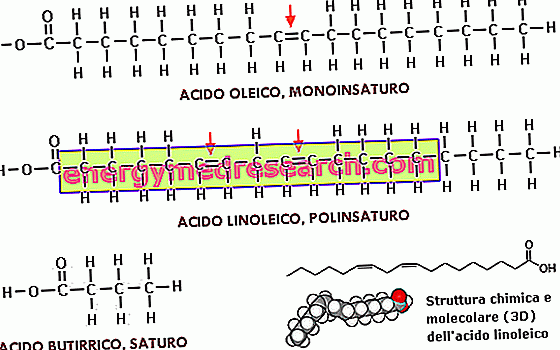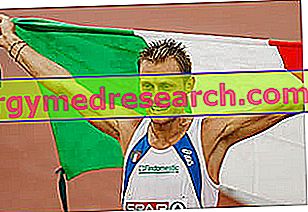Generality
Facial dermatitis is a skin disorder that can cause many discomforts to people who suffer from it.

In truth, there is no single form of dermatitis that can affect the face. In fact, there are several disorders of this type that can affect the skin of the face, each caused by different factors and each characterized by its own symptoms. However, all dermatitis are generally associated with an inflammatory condition of the skin, usually associated with redness, irritation, itching, pain and / or burning.
During the article, the main forms of facial dermatitis will be analyzed, for which symptoms, clinical manifestations, causes and possible treatments will be described.
Perioral Dermatitis
Perioral dermatitis is a particular type of facial dermatitis that affects the perioral area (ie, the area around the mouth). It is a disease that mainly affects women of child-bearing age and children.
Clinical symptoms and manifestations
The clinical manifestations of this form of facial dermatitis are located near the mouth. Generally, the disorder begins with the appearance of erythematous papules at the level of the nasolabial folds which then extend around the mouth. In the chin area, on the other hand, itchy red spots may appear; while the skin surrounding the lesions appears dry and reddened. Other symptoms that can manifest themselves in the presence of this type of facial dermatitis consist in burning of the mouth and pain.
Causes
The causes that cause this dermatitis of the face are not yet completely clear. According to some authors, perioral dermatitis could represent a complication of seborrheic dermatitis; while for others it could be a sort of rosacea variant.
However, it is believed that factors such as:
- Hormonal alterations;
- Environmental and climatic factors (in particular, exposure to light and wind);
- Stress;
- Presence of infectious agents (bacteria, fungi, ectoparasites such as Demodex folliculorum, etc.).
Furthermore, it has been noted that the use of topical corticosteroids can negatively influence and worsen the manifestations of the disease.
Treatments and Treatments
Since the cause of perioral dermatitis is not known, a specific cure that can eliminate it has not yet been identified. However, it is necessary to suspend the possible administration of corticosteroids for topical use and avoid direct exposure to sunlight and UV rays. In specific cases, the doctor may consider the possibility of using antibiotics .
Of course, cleaning and skin care are essential and must be carried out using suitable products.
Seborrheic dermatitis
Dermatitis of the Seborrhoeic Type Face
Seborrheic dermatitis usually occurs in the scalp, but can also occur in areas of the face that are more rich in sebaceous glands, such as, near the eyebrows, furrows in the nose, chin or around the ears.

Clinical symptoms and manifestations
Seborrheic facial dermatitis is characterized by the presence of inflammation and the formation and consequent loss of greasy scales . The skin is strongly irritated and reddened; moreover, more often than not, the disease can be associated with folliculitis.
Causes
Seborrheic-type facial dermatitis is very common in people with oily skin, but the exact causes of the disease have not yet been precisely identified. However, it is believed that the disorder can be triggered by infections sustained by fungi belonging to the genus Malassezia ( M. furfur and M. globosa ). In addition to this, there are many risk factors that may be involved in the onset of seborrheic-type facial dermatitis. Among these, we mention a few:
- Genetic predisposition;
- Stress;
- Hormonal alterations;
- Taking some types of drugs;
- Changes in the function of the immune system.
Treatments and Treatments
Unfortunately, there is no real cure for seborrheic-type facial dermatitis. However, you can use products or drugs to control symptoms and manifestations. For example, products based on salicylic acid or zinc can be used; while in the most serious cases, it is possible to use corticosteroid or antifungal drugs . In any case, the dermatologist will decide which treatment best suits each patient.
Finally, it is important to remember the importance of facial hygiene, which must be cleansed and treated with delicate and quality products.
Contact Dermatitis
Contact Face Dermatitis
Contact dermatitis of the face may occur following contact with irritating substances, or following contact with allergenic substances. For this reason, it is possible to distinguish two forms: irritative contact dermatitis (DIC) and allergic contact dermatitis (DAC).

To make this type of facial dermatitis manifest itself, contact with the substances mentioned above should generally be direct.
Clinical symptoms and manifestations
Contact facial dermatitis is characterized by the appearance of redness, irritation, swelling, even very intense itching and blistering . In some cases, we can also see phenomena of de- epithelialization .
Causes
The causes of contact dermatitis are different:
- Irritative contact dermatitis: this form of facial dermatitis is triggered when the skin of the face is placed in contact with irritating substances such as, for example, detergents or make-up products that are too aggressive, unsuitable for your skin type and / or of poor quality.
- Allergic contact dermatitis: this type of facial dermatitis occurs when the skin of the face comes into contact with substances capable of triggering an excessive and abnormal response by the immune system ( allergic reaction ). Examples of such substances are certain types of metals (eg nickel), latex, drugs for topical use, etc.
Treatments and Treatments
The main treatment of contact dermatitis is to avoid the "incriminated" substances (both irritative and allergenic) that can give rise to the disorder. To do this, of course, it is necessary to pinpoint which agent is responsible for the irritation or allergic reaction.
In order to alleviate symptoms and facilitate healing, the doctor may decide to prescribe topical or possibly oral corticosteroid drugs to the patient. Needless to mention that drugs of this type should only be used if prescribed by a doctor.
Atopic dermatitis
Facial Dermatitis of the Atopic Type
Atopic dermatitis - also known as atopic eczema - can affect any area of the body, including the face.

Usually, this form of dermatitis appears in the pediatric age and rarely occurs in adult or advanced age.
Clinical symptoms and manifestations
The onset of atopic facial dermatitis is characterized by the appearance of erythema, dryness of the skin, itching, formation of blisters and scabs . As the disease progresses, more severe symptoms may occur, such as very intense itching, hyperkeratosis and fissures . Furthermore, the skin is more susceptible to the contraction of various types of infections (superinfections).
Causes
There is no single cause that can trigger atopic facial dermatitis. Indeed, it is believed that the pathology can be triggered by various factors that contribute to one another. Among these, we recall:
- Genetic factors;
- Environmental factors and pollution;
- Stress;
- Exposure to irritants;
- Predisposition to certain types of allergies.
Treatments and Treatments
Treatment of atopic dermatitis usually involves the use of corticosteroid drugs for topical use . In the most serious cases, however, the doctor may decide to use oral corticosteroids, or even the use of immunosuppressants (they are not first choice drugs).
If atopic facial dermatitis is associated with allergic manifestations, the dermatologist may consider prescribing antihistamine drugs to the patient.
In the case of superinfections, however, the doctor may decide to administer antibiotic, antiviral or antifungal drugs, depending on the pathogenic agent responsible for the infection.
Finally, the use of products with an emollient action can be useful to obtain relief from the symptoms of the disease.
Please note
Corticosteroid drugs for topical use are used in the treatment of different types of facial dermatitis, because these drugs have a strong anti-inflammatory action mainly through the inhibition of the synthesis of inflammation mediators and through the modulation of the immune system. Thanks to this particular mechanism of action, therefore, corticosteroids are able to counteract the typical inflammation that accompanies the various forms of facial dermatitis and the consequent symptoms it induces.
Herpetiform dermatitis
Dermatitis of the Herpetiform Type Face
Herpetiform dermatitis - also known as skin celiac disease - is a form of dermatitis that rarely affects the face, however, this possibility cannot be excluded. The dermatitis in question is a disease that occurs in patients with celiac disease. Onset usually occurs at a young age or in adulthood; hardly appears in old age or in the first years of life.
Clinical symptoms and manifestations
Herpetiform type facial dermatitis is manifested by redness, serous bubble formation and vesicles . These manifestations are often associated with symptoms such as itching (even very strong), or burning .
Causes
Herpetiform type facial dermatitis is considered by many to be the cutaneous effect of gluten intolerance . In fact, patients affected by this disease are also affected by celiac disease; however, not all celiacs are affected by dermatitis herpetiformis. However, in the etiology of the disorder there is the presence of a genetic component, since the disease is characterized by particular mutations located on the same gene implicated in the etiology of celiac disease.
Treatments and Treatments
The main treatment of dermatitis of the herpetiform type is to avoid completely foods containing gluten . Following a diet suitable for celiac disease, in fact, the cutaneous manifestations should diminish and resolve. If this does not happen, it is necessary to ask the doctor for help.



